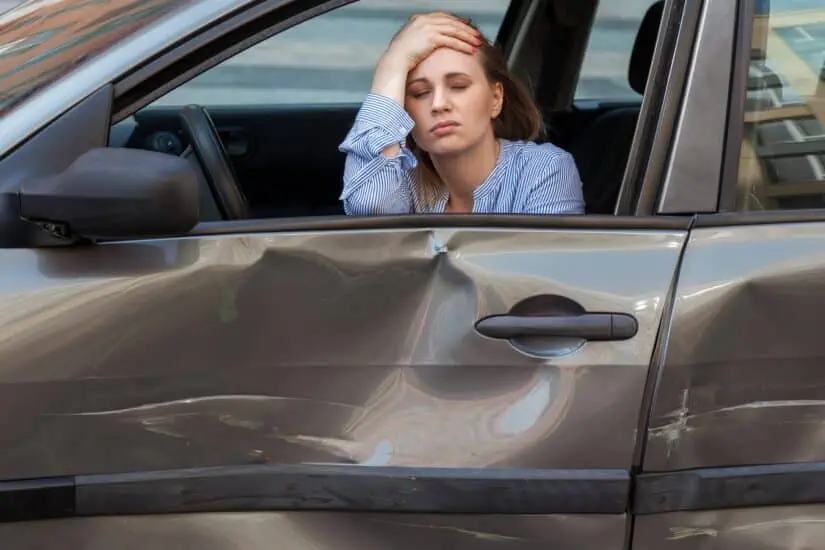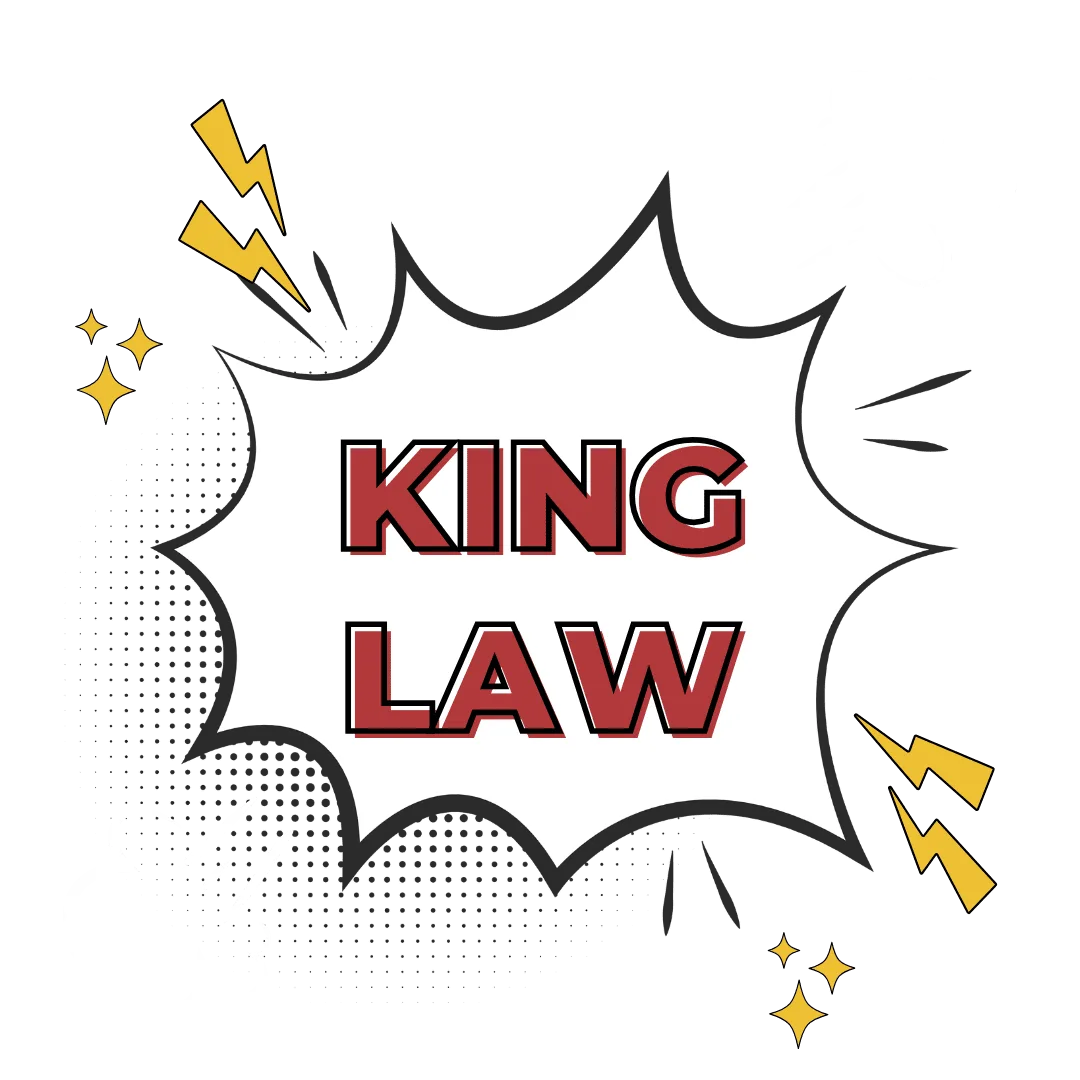Los Angeles, often dubbed the “City of Angels,” is also known for its notorious traffic congestion. Driving in the busy streets and highways of LA can be a daily challenge, and car accidents are all too common. At the King Law Firm, our proven and client-focused car accident attorneys understand the importance of road safety, and we want to help you stay safe while driving in this crowded metropolis.

Why is Driving in Los Angeles So Dangerous?
Driving in Los Angeles can be dangerous for several reasons, and while conditions can vary from day to day and neighborhood to neighborhood, there are some consistent factors that contribute to the overall risk of auto accidents and traffic deaths:
- Traffic congestion and long commute times
- Complex and busy freeways and interchanges
- High rates of driver fatigue, distracted driving and aggressive behavior
- Reckless driving behaviors and road rage
- Prevalence of DUI incidents
- Occasional adverse weather conditions
- Varied road conditions and maintenance
- Challenges sharing the road with pedestrians and cyclists
- Inadequate public transportation options
- Frequent road construction and traffic disruptions
- Driving under the speed limit in fast lane
- Not paying attention to road signs and street signs
To mitigate the risks associated with driving, it’s essential for Los Angeles drivers to stay attentive, follow traffic laws, and exercise good driving habits. If you or someone you know was injured in an auto accident because of the negligent actions of another, you should consult with an experienced personal injury lawyer to obtain compensation.
3 Driving Techniques That Could Help You Avoid a Collision
The following three techniques, when applied consistently and responsibly, can significantly reduce the likelihood of being involved in a collision while driving:
Defensive Driving
Defensive driving involves staying alert and anticipating potential road hazards. Maintain a safe following distance, be aware of your surroundings, and watch for signs of aggressive or erratic driving from other drivers.
Proper Braking and Following Distance
Maintaining a safe following distance from the vehicle in front of you is important. This gives you more time to react if the car ahead suddenly stops or slows down. Use the “three-second rule” as a guideline for maintaining distance.
Scanning and Checking Blind Spots
Continuously scan the road ahead and check your mirrors to be aware of the traffic flow around you. Frequently check your blind spots by physically turning your head to ensure no cars are hidden from view.
How to Avoid Traffic in Los Angeles?
Avoiding traffic on the surface streets in Los Angeles can be challenging, but with some planning and smart strategies, you can minimize your time spent stuck in congestion. Here are a few tips to help you find your way through LA’s notorious traffic, especially Santa Barbara, Santa Monica, Venice Beach, Pacific Coast Highway, and Southern California:
- Use traffic apps and Google Maps for real-time updates and alternate routes
- Travel during off-peak hours to avoid rush hours congestion
- Use HOV and carpool lane for faster commutes
- Explore public transportation options when possible
- Consider telecommuting to reduce daily trips
- Bike or walk for short distances when feasible
- Shop and run errands during less crowded times
- Navigate side streets to bypass main thoroughfares
- Stay informed about accidents and road closures
- New drivers should plan ahead and combine errands for efficiency
- Explore alternate transportation methods like scooters
- Be mindful of major events that impact traffic patterns
What Is the Best Time to Avoid L.A. Traffic?
The best time to avoid heavy traffic in Los Angeles is typically during the non-peak hours when traffic congestion is less pronounced. Traffic is usually lighter during the early morning hours. If you need to commute or travel long distances, leaving before sunrise can help you avoid the morning rush hour.
The mid-morning hours (9:30 AM – 11:30 AM) often see reduced traffic compared to rush hour. If your schedule allows, consider running errands or traveling during this time. After the morning rush hour subsides, traffic tends to ease up during the early afternoon. This is usually the best time for appointments or shorter trips.
Late evenings generally experience lighter traffic, making it a convenient time for less crowded travel or for attending evening events. You can also use neighborhood streets to avoid busy roads.

What is the Best Time to Drive Through Los Angeles?
The best time to drive through Los Angeles County with minimal traffic congestion typically falls during non-peak hours. The early morning hours (before 6:30 AM) are often the least congested in Los Angeles.
Late evenings (after 8:00 PM) generally experience lighter traffic, offering a convenient time for driving through Greater Los Angeles, especially for longer journeys. Traffic is typically lighter on Saturdays and Sundays compared to weekdays. If your schedule allows, planning your drive during the weekend can result in a smoother journey.
What are the Most Common Types of Traffic Accidents in California? What Can I Do to Reduce My Chances of Being Involved in One?
In California, like many other states, several common types of traffic accidents occur regularly. Understanding these accident types can help you be more aware and take steps to prevent them.
- Rear-End Collisions: These occur when one vehicle hits the rear of another, often due to tailgating or distracted driving.
- Intersection Accidents: These happen at dangerous intersections when a driver fails to yield, runs a red light, or misjudges another driver’s actions.
- Side-Impact (T-Bone) Collisions: Involves the front of one vehicle colliding with the side of another, typically at intersections.
- Single-Vehicle Crashes: Occurs when one vehicle crashes without involving another vehicle, often due to loss of control.
- Distracted Driving Accidents: Results from drivers being distracted by phones, GPS, or other activities while driving.
- Drunk Driving Accidents: Involves drivers impaired by alcohol or drugs, leading to reduced reaction times and poor judgment.
- Speeding Accidents: Happens due to excessive speed, reducing reaction time and increasing collision severity.
- Lane Change and Merge Accidents: Occurs when drivers fail to signal properly or check blind spots during lane changes or while merging.
- Pedestrian and Bicycle Accidents: Involves collisions with pedestrians or cyclists, often due to driver negligence.
Here are a few safety tips for avoiding car accidents in Los Angeles traffic:
- Stay Focused: Avoid distractions like texting
- Plan Your Route: Dodge peak traffic and congested areas
- Maintain Safe Distance: Keep a 3-second gap
- Be Weather-Wise: Exercise caution in rain, fog, and other inclement weather
- Signal Intentions: Use turn signals to communicate
- Watch for Others: Be vigilant around pedestrians and cyclists
- No Aggressive Driving: Avoid tailgating or road rage
- Check Blind Spots: Always check before you change lanes, especially carpool lanes
- Vehicle Maintenance: Keep your car in top shape
Remember, even if you are paying attention and driving sensibly, there may be other cars and road users lacking basic civic and common sense. If you were injured due to another driver’s negligence, a qualified car accident attorney based in Northridge can help you uphold your right to compensation.
What to Do If You are in a Car Accident in Northridge?
In the event of a car accident in Northridge, the first thing you need to do is ensure your safety and the safety of others involved. If possible, move your vehicle to a safe location, turn on hazard lights, and set up warning triangles or flares, if available.
Contact local law enforcement to report the accident. The report filed by the police officer can play a major role in insurance claims and any potential legal actions. Provide the responding officers with accurate and detailed information. Hire the services of a personal injury attorney with experience in handling traffic accident cases. These are a few ways an attorney can help you:
- Investigation: Attorneys will thoroughly investigate the accident, including reviewing police reports, collecting witness statements, obtaining accident scene photos, and possibly even hiring accident reconstruction experts if necessary to establish liability.
- Medical Records and Bills: They will help you gather and organize the medical records, bills, and reports to assess the extent of your severe injuries and calculate potential damages.
- Insurance Communications: Your attorney will handle all communications with insurance companies on your behalf. This includes notifying the insurance company of the accident, submitting claims, and negotiating settlements.
- Negotiation: Attorneys are skilled negotiators. They will negotiate with the at-fault party’s insurance company to obtain a fair settlement that covers your medical expenses, property damage, lost wages, and other damages.
- Legal Advocacy: If the insurance company is unwilling to provide a fair settlement, your attorney may file a lawsuit and represent you in court. They will build a strong case, present evidence, and advocate for your rights during trial.
- Collecting Evidence: Your attorney will collect evidence that supports your claim, such as medical records, accident scene photos, witness testimonies, and expert opinions if needed.
- Legal Advice: Throughout the process, your attorney will provide you with legal advice on your options, potential outcomes, and the best course of action.
Discuss a Winning Legal Strategy with Our Car Accident Attorneys to Maximize Damages
If you find yourself involved in a car accident, don’t hesitate to contact the experienced personal injury attorneys at the King Law Firm. We’re here to protect your rights and help you get the compensation you and your family need to move forward with your lives. Our proven track record and over $50 million in compensation won for our clients speaks to our commitment. Schedule your free consultation with our lawyers today. Call us at 818-886-6300 or contact us online.
